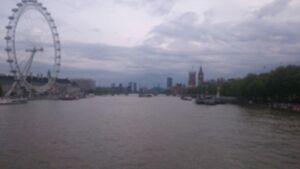Visual acuity suppression

Visual acuity suppression is defined as the degradation of the sharpness and clarity of vision, resulting in vision becoming partially to completely blurred and indistinct.[1] This effect may affect the entirety of the person's vision or specific sections of it. The experience of this acuity suppression is comparable to looking through an out of focus lens which degrades the detail one can see in the external environment. Depending on its intensity, this can often result in a reduced ability to function and perform basic tasks which necessitate the use of sight.
Visual acuity suppression is often accompanied by other coinciding effects such as double vision and pattern recognition suppression. This effect is most commonly induced under the influence of moderate dosages of depressant and dissociative compounds, such as alcohol[2], quetiapine, ketamine, and DXM.
Psychoactive substances
Compounds within our psychoactive substance index which may cause this effect include:
- 2-Fluorodeschloroketamine
- 3,4-CTMP
- 3-Cl-PCP
- 3-HO-PCE
- 3-HO-PCP
- 3-MeO-PCE
- 3-MeO-PCMo
- 3-MeO-PCP
- 4-HO-DPT
- 4-MeO-PCP
- 5-MeO-DMT
- 5F-PB-22
- A-PHP
- A-PVP
- Alcohol
- Alprazolam
- Amanita muscaria
- Benzydamine
- Bromazepam
- Bromazolam
- Bufotenin
- Cannabis
- Carisoprodol
- Chlordiazepoxide
- Clonazepam
- Clonazolam
- Datura
- Deschloroketamine
- Dextromethorphan
- Diazepam
- Diphenhydramine
- Diphenidine
- Ephenidine
- Flualprazolam
- GBL
- GHB
- Gaboxadol
- HXE
- JWH-018
- JWH-073
- Ketamine
- Kratom
- MXiPr
- Mebroqualone
- Memantine
- Methaqualone
- Methoxetamine
- Methoxphenidine
- Mirtazapine
- Myristicin
Experience reports
Anecdotal reports which describe this effect within our experience index include:
- Experience: 550mg DPH - My First Time on DPH
- Experience:100ug 1P-LSD - A Fear and loathing into Bliss
- Experience:200 mg of MXP + N2O:20 chargers
- Experience:250 seeds - Harsh body load
- Experience:25mg Deschloroketamine - My first time orally dosing DCK
- Experience:3-MeO-PCP - Extreme psychosis
- Experience:3-MeO-PCP, LSD, Clonazolam, and Amphetamine - Excessive Amounts and Excessive Confusion
- Experience:3g Syrian Rue + 5g Acacia Confusa - Life Changing Madness
- Experience:60mg Zolpidem - A Delirious Adventure
- Experience:DXM & DPH in combination
- Experience:Datura Alcoholic Tincture
- Experience:Mushrooms (~0.5 g) - Autonomous Voice
- Experience:Unknown dose - Supermarket dislocation and biking
See also
- Responsible use
- Subjective effects index
- Acuity enhancement
- Dissociatives - Subjective effects
- Deliriants - Subjective effects
- Psychedelics - Subjective effects
External links
References
- ↑ B.Sc., Joanne L. Smith; Buncic, J. Raymond (2018). "Drugs Which Can Affect near Vision: A Useful List". American Orthoptic Journal. 49 (1): 180–190. doi:10.1080/0065955X.1999.11982210. ISSN 0065-955X.
- ↑ Kunchulia, Marina; Pilz, Karin S.; Herzog, Michael H. (2012). "How alcohol intake affects visual temporal processing". Vision Research. 66: 11–16. doi:10.1016/j.visres.2012.06.010. ISSN 0042-6989.